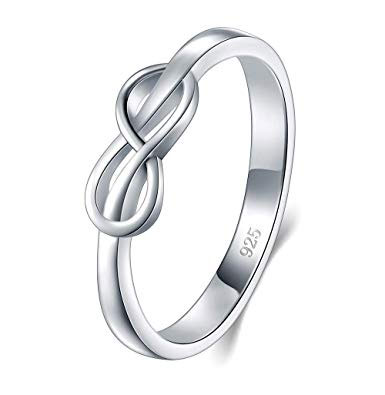Metal Guide
Jewellery Metals Guide
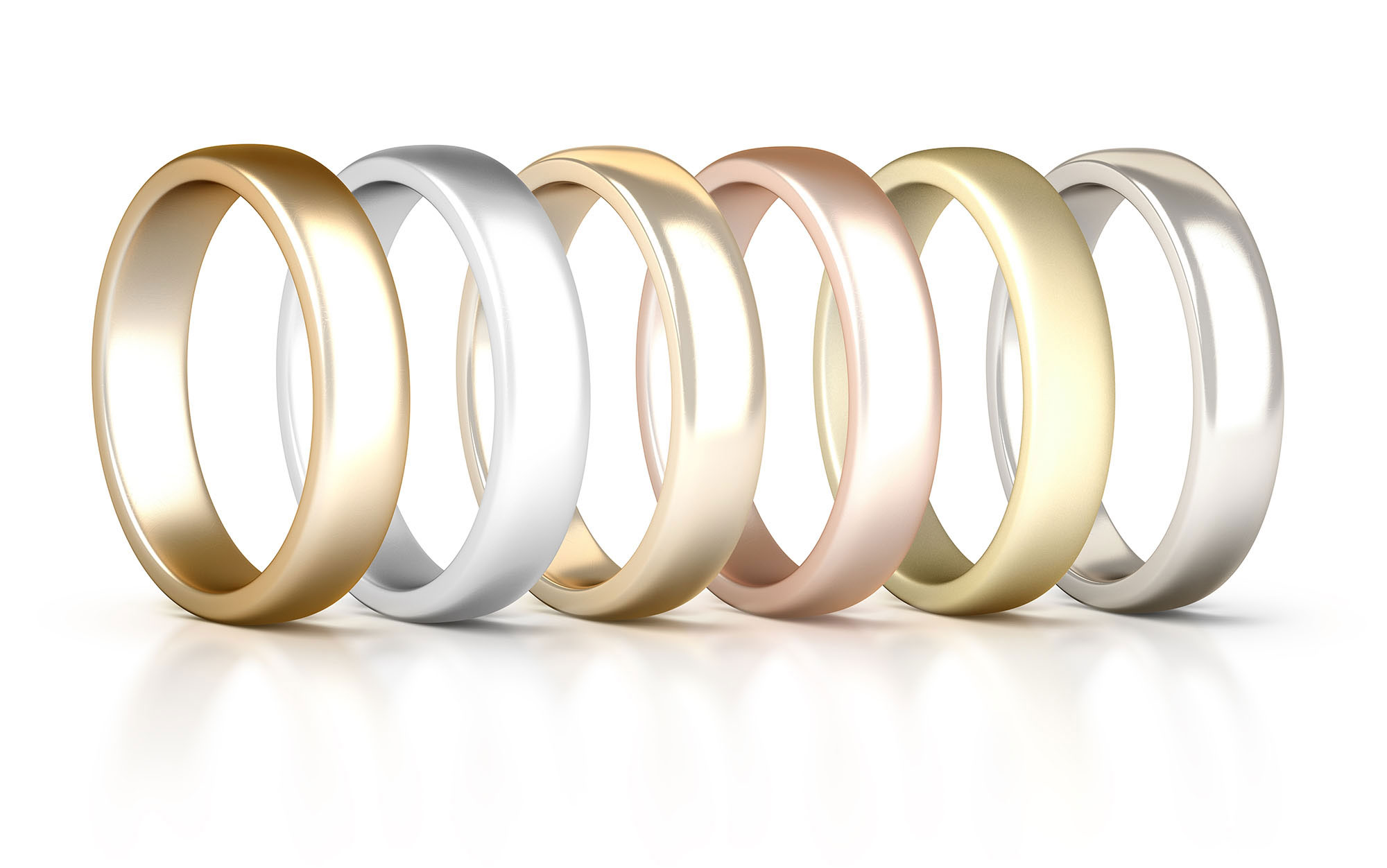
Metal Guide
There are different kinds of jewels and stones in this world, with multiple levels of purity and quality. Each metal has a special touch and is popular for different reasons. Some of the common metal names include gold, silver, platinum, rose gold, etc. As a buyer, you must consider several factors before choosing the metal that will suit you. The trick to choosing what you need is understanding the various kinds of metals, their different properties, and their purposes. To simplify this process, we have put together a metal guide with an explanation of different metals and their finer details.
Buying Different Metal Types
When purchasing a piece of jewellery, deciding on the right type of metal can be tricky. To ensure the ring bracelet or necklace will continue to look its very best for years to come, you’ll need to consider where, when, and how the piece will be worn. Will the recipient wear the item everyday, and so will need something durable and resilient, or will it be a piece for only the most special occasions, and so need to resist tarnish whilst in storage? Are their tastes more traditional, or contemporary? Do they prefer delicate and fine pieces, or something more chunky to make a statement?
This may all seem like a lot to consider, and might even seem a little daunting if you don’t know where to begin! If you’d like a little more guidance and advice, please do drop us a message or visit us in store - our expert jewellers have a wealth of knowledge to be able to assist you in finding the perfect piece.
What is Metal Carat?
24-carat gold is pure gold. Unlike the other metal carats, 24-carat gold is 99.99% pure and is marked with a fineness of 999. These are available in the form of bars, and coins, and are not usually used to make jewelry items. 24-carat gold is soft and malleable and is in a distinct yellow color. The 24-carat is more expensive than the 22-carat and 18-carat.
- 9ct - gold is hallmarked 375, so has 375 parts of pure gold (37.5%), with the rest comprising of other metal alloys. 9ct gold is a very durable metal, so is perfect for everyday wear. As it has the lowest volume of pure gold it is also the most cost effective option for gold jewellery.
- 14ct - gold is hallmarked 585 and therefore has 585 parts per thousand of pure gold. It is the preferred metal in America and mainland Europe. Its higher gold content puts it in the middle of the most popular gold qualities (durability, cost, colour) but as it is not commonly used in the UK, it can actually work out slightly more expensive as items usually need to be custom made or imported.
- 18ct - gold has the highest content of pure gold that you will find on the high street. There are 750 parts per 1000 and it is hallmarked 750. This provides a rich yellow or rose colour due to its high gold content. It is also very durable and ideal for pieces such as engagement rings or wedding bands, which will be worn daily.
- 22ct - gold is hallmarked 916 (91.6% gold content), so is the purest form of gold available in jewellery. The small percentage left over is usually mixed with copper or silver. Due to its high gold content it is very yellow in colour and is quite popular in Indian jewellery.
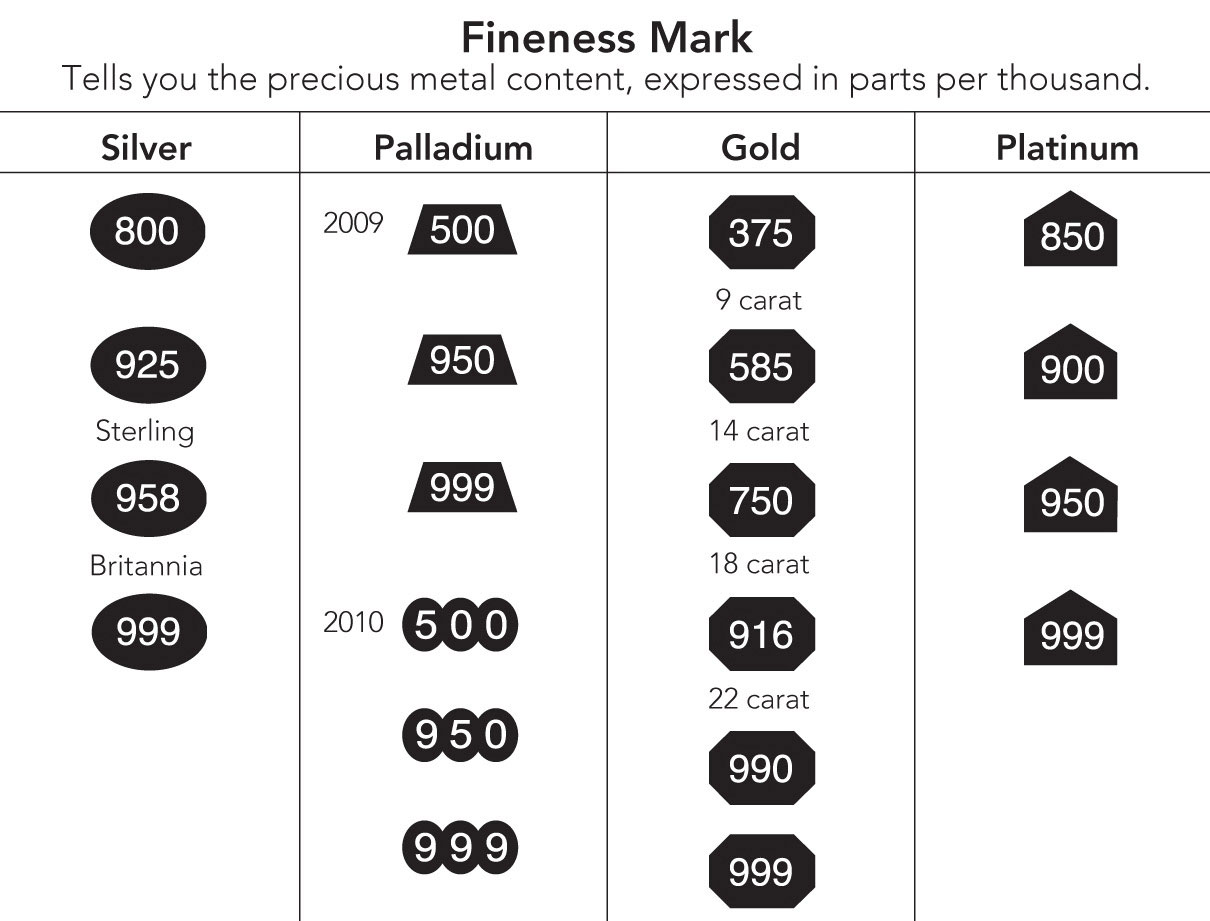
Precious metals - what’s the difference?
We’ve outlined the main metals used for jewellery below, and their suitability for different situations. The most common are gold, platinum, silver, and palladium. There are also a few non-precious options for those who don’t fancy the price tag or look of the precious options, however be aware these are not always commonly available in jewellery stores.
Yellow Gold
History and Origin of Gold in jewellery making
The history of gold in jewellery making doesn’t date just decades but centuries. Even in ancient civilizations like Mesopotamia, gold was always considered a symbol of richness and pride. In other ancient cultures like Rome and Ancient China too, gold was worn by many people. A testament to these is the archeological findings from many such civilizations. For instance, several gold jewelry pieces were discovered in Bulgaria, which was home to the Thracians in the 5th millennium BC. The gold jewellery is said to be traced back to 4400 BC. However, several experts opine that people might’ve been wearing gold jewels much earlier than that. Since gold jewelry gave a sense of permanence, it was considered a royal companion to kings and warriors even in their afterlife.
How is yellow gold made?
Yellow gold, as its name suggests, retains the color of pure gold to the maximum extent. It is usually made by blending pure gold with copper, silver, and zinc. There is a difference between pure gold and yellow gold, with the latter having a warmer tone. The ratios in which gold, copper, and zinc are mixed create different hues of golden yellow. For example, when gold is mixed with more zinc, it takes on a light and paler yellow. Whereas, when it’s mixed with more copper, you get a darker and red-tinted yellow gold.
How to care for your yellow gold jewellery:
Gold is precious and each of our jewellery also carries a certain meaning that makes it special and memorable for us. When something is so valuable, isn’t it our duty to protect the jewelry? Here are a few tips on how you can care for your yellow gold jewellery.
- ● When getting ready, wear the jewelry on last.
- ● Avoid wearing gold jewelry when you take a bath.
- ● Try and keep it away from high temperatures.
- ● Ensure the gold doesn’t come in contact with any kind of chemical.
- ● Either opt for professional cleaning or use soap, alcohol, or toothpaste to clean the jewelry.
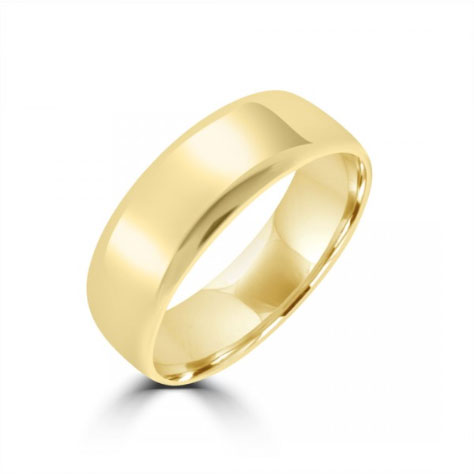
Rose Gold
What is rose gold?
When gold is mixed with copper, you get rose gold. The colour ranges between red and yellow – a shade of rose – which gave way to its name. In this type of gold, 75% is pure gold and 25% copper. Rose gold is also categorized as 18k rose gold and 14k rose gold based on the ratios of different metals. Sometimes, silver is also mixed with copper and pure gold. Lightweight jewels made of rose gold like chains and earrings are now in trend among the younger generations.
Pros
- ● The rose hues of the jewel suit most skin tones and offer a warm and beautiful look.
- ● The biggest plus of rose gold is its affordability.
- ● Rose gold does not need plating as white gold does. It does not tarnish either. So, they can be cleaned and maintained very easily.
- ● It gives a vintage appeal and also looks more romantic.
- ● Rose gold is still an underrated variety and is only now becoming popular, which means when you choose a rose gold jewel, you are more likely to be wearing a unique and charming piece of jewellery.
- ● Rose gold is more durable when compared to yellow and white gold as it contains more copper.
- ● Since rose gold is lighter in tone, it complements several gemstones, even the feeble knees like pink sapphires.
Cons
- ● If you are choosing colorless diamonds as gems, those may reflect the colour of the metal. The appearance may vary because of the lighter shade of rose gold.
- ● Since there is more quantity of copper, very rarely few people tend to have allergic reactions.
- ● Rose gold jewellery is not as widely available as white or yellow gold ones.
- ● When copper oxidizes, the pink shade may change over time.
- ● Rose gold is currently in trend but if you are someone who likes timeless style, this may not be the perfect choice.
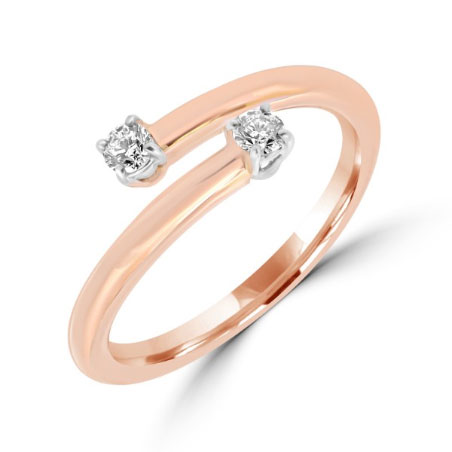
White Gold
What is white gold?
White gold is an alloy containing a mix of gold, nickel, and zinc. If it is 18k carat stamped white gold, it will have 75% of pure gold. Digging into history, white gold is said to have been developed to imitate platinum, which is a naturally white metal. This makes white gold an affordable alternative to platinum.
Looking after your white gold jewellery
White gold jewellery does require a lot of care. But when properly maintained, it does wonders for the jewel.
- ● Proper cleaning - Regular cleaning is the key to maintaining the sparkle of your white gold rings. You can use just warm water or a gentle soap solution to clean the jewellery. You can soak the ring for a few minutes and scrub it with a gentle brush. Once done, ensure to dry it with a lint-free cloth.
- ● Safe storage - It’s important to store the jewel in a safe pouch or box, best with soft fabric.
- ● Safe storage - It’s important to store the jewel in a safe pouch or box, best with soft fabric.
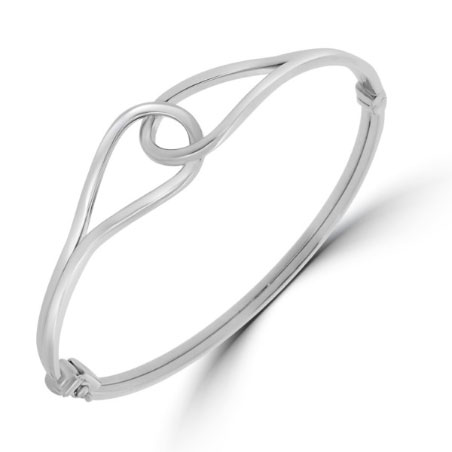
Platinum
What is platinum
Platinum may not have been your favourite in chemistry class but there are fans for the metal when it comes to jewellery. Platinum is a silverish-white metal that’s considered valuable. Mostly found in South Africa, which accounts for 80% of platinum production in the world, the metal is lustrous and ductile. Authentic platinum pieces of jewellery often carry the words “Platinum”, “PLAT” or “PT” or have the numbers “950” or “999”.
Platinum vs Gold
Gold and platinum are the two most sought-after metals when it comes to especially wedding and engagement rings. Platinum is considered more valuable than gold because the former is a rare metal and is purer. Whereas gold is said to be more comfortable as platinum is heavier.
Platinum vs Silver
Both platinum and silver are white-toned jewellery but vary largely in terms of appearances, prices, and uses. Platinum is shinier and more expensive than silver. While platinum is us
How to clean platinum jewellery
Platinum jewellery might require professional cleaning but there are simple and safe ways to clean it at home regularly.
- ● Soak the piece of jewellery in a mild soap solution (ensure it’s chemical-free) and warm water.
- ● Use a soft cloth to remove the surface dirt.
- ● Only if you want to clean underneath in small spaces, use a gentle brush. (Toothbrushes are not recommended).
You can do this regularly and get it professionally cleaned once every year.
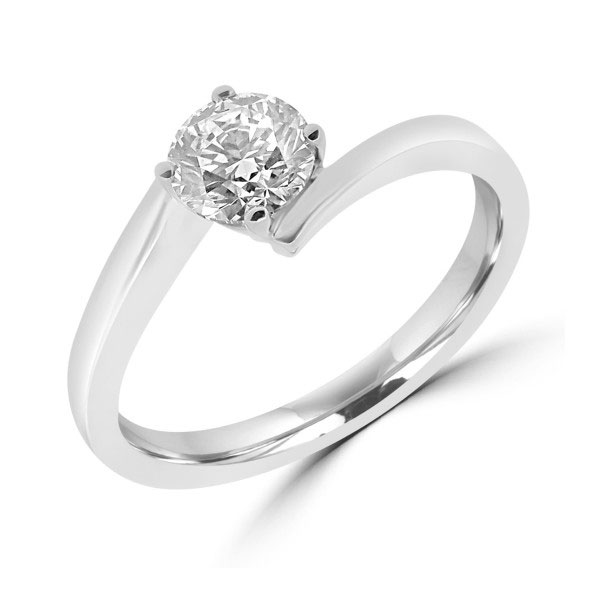
Palladium
What is palladium
Unlike the other metals, palladium isn't something we commonly discuss. Palladium is a rare metal belonging to the platinum group of elements. Like platinum, palladium too is a silver-ish white metal. It is a popular choice for jewellery because of its durability and attractiveness. When compared to platinum, palladium is the least dense of white metals.
How to clean palladium jewellery
There are three simple steps to clean palladium jewellery.
- ● Soak the piece of jewellery in a mild soap solution (ensure it’s chemical-free) and warm water for five minutes.
- ● Use a soft cloth to remove the surface dirt.
- ● Only if you want to clean underneath in small spaces, use a gentle brush. (Toothbrushes are not recommended).
PS: If you think the dirt is not fully removed, repeat the steps.
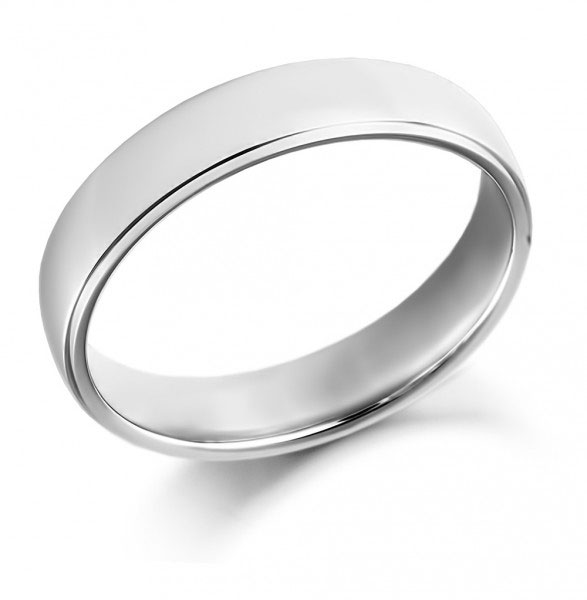
Silver
What is silver
Silver is a commonly used white metal that is utilised to make rings, chains, earrings and several other ornaments. They are also used to make other items like plates, tumblers, etc.
Silver vs Gold
Choosing between silver or gold jewellery purely depends on the kind of colour metal you wish to wear and the investment you would like to make. Compared to gold, silver is more affordable. In that sense, gold is also a much more valuable metal.
How to clean Silver jewellery
- ● Soak the piece of jewellery in a mild soap solution (ensure it’s chemical-free) and warm water for five minutes.
- ● Use a soft cloth to remove the surface dirt.
- ● Only if you want to clean underneath in small spaces, use a gentle brush. (Toothbrushes are not recommended).
- ● Dry the jewellery using a soft cloth. Don’t use a paper towel, it might affect the surface of the silver jewellery.
There are also silver polishing cloths available which you can use to scrub and clean the jewellery.
